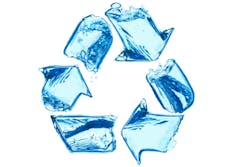Groups call for investment in water reuse and recycling
ALEXANDRIA, Va. — Jan. 12, 2016 — Eight water sector organizations have asked the U.S. Bureau of Reclamation to use a portion of newly received drought response funds to invest in water reuse research and infrastructure, according to a press release.
In a joint letter to Commissioner Estevan López, the groups cited a WateReuse Research Foundation study which found that potable water reuse is generally less expensive than — or comparable in cost to — the potential alternative sources of new water supply available to communities in places such as California, noted the release.
The letter said that recycled water projects proposed by 92 agencies in 14 states could produce more than 900,000 acre-feet of additional water supply.
Reuse practices are already used effectively in water distribution systems around the world, the organizations pointed out.
“Funding reuse projects will have a direct, immediate, and large impact on extending limited water supplies during current drought conditions, improve water supply reliability, improve water deliveries, enhance national, regional, and local economic development, promote job growth and address critical backlog maintenance and rehabilitation activities,” they said in the release.
The letter was signed by the WateReuse Association, National Association Clean Water Agencies, American Public Works Association, National Association of Water Companies, Water Environment Federation, Association of Metropolitan Water Agencies, American Water Works Association and the Association of California Water Agencies, stated the release.
“On an important issue like this one where there is potential to create significant new water supply at a time when it is urgently needed, it is vital that the water community speak with one voice in requesting federal support,” commented Melissa L. Meeker, executive director of the WateReuse Association.
You can find the entire release here.
